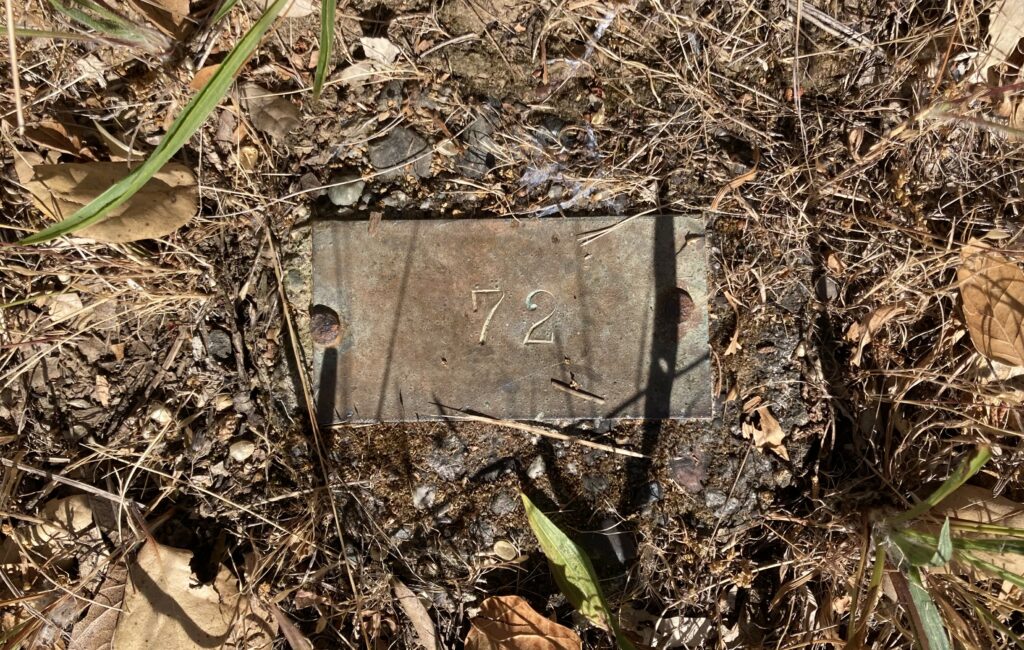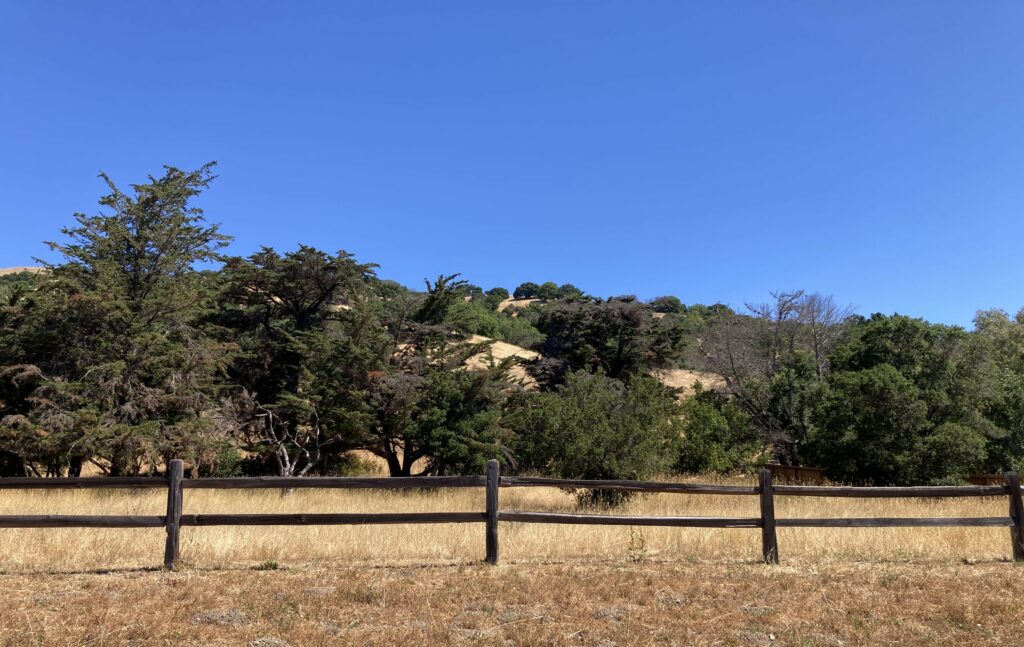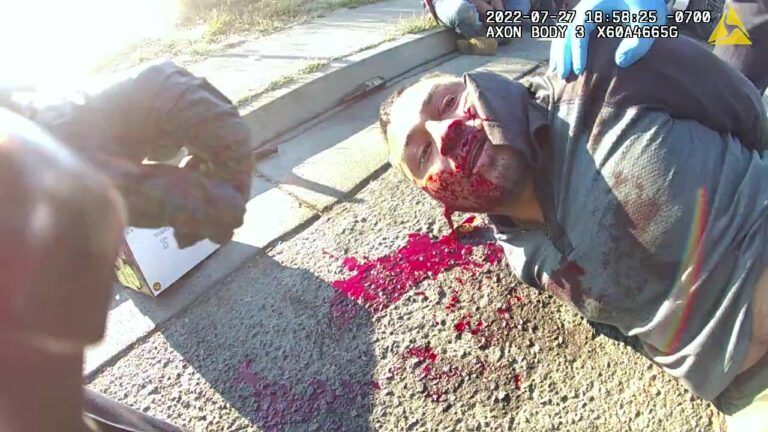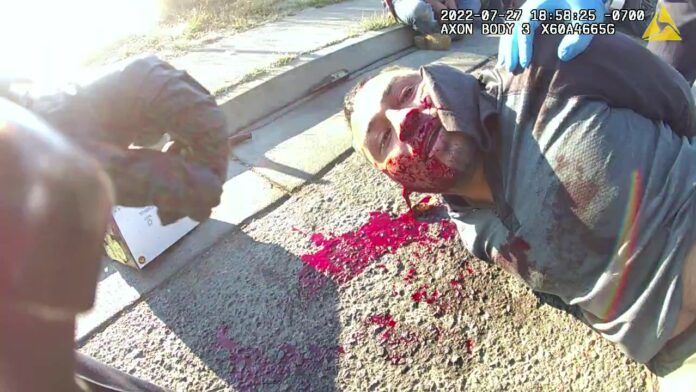The two former San Rafael police officers looked appropriately somber as they walked through the corridor outside of Courtroom C in the Marin County Civic Center last week. Twice this month, they have appeared before a judge to face two felony charges each—assault by an officer under color of authority and making false statements on police reports.
On both court dates, spectators gazed intently at the co-defendants, Brandon Nail and Daisy Mazariegos, while everyone waited in the hallway until the bailiff arrived to unlock the courtroom doors. Mostly, Nail and Mazariegos averted their eyes from the gawkers. Flanked by a small entourage of attorneys and others, probably family and friends, Nail and Mazariegos turned their heads away as photojournalists took their shots.
The pair now look different than they did in the widely circulated videos from that defining incident on July 27, 2022, when they questioned a Latinx man about an open container of beer and then forcibly restrained him, leaving him injured and laying in his own blood on a street in the Canal neighborhood.
The previously clean-shaven Nail currently sports a full beard and mustache. But it’s Mazariegos whose appearance has changed more substantially. She is visibly pregnant, due in mid to late October, her attorney, Christopher Shea, told me.
During the arraignment on Aug. 11, the first court date for the defendants, there was audible whispering among the crowd when they realized Mazariegos is pregnant. It’s unsettling to consider that this fresh-faced young woman is preparing her criminal defense at the same time she’s preparing to welcome a baby into the world.
Both Mazariegos and Nail pled not guilty at the arraignment, which prompted Marin County Superior Court Judge Beth S. Jordan to schedule a preliminary hearing, the proceeding that determines whether the case will move forward to trial.
Last week, a small group gathered again outside of Courtroom C, waiting to be ushered in for the preliminary hearing. The prosecution was slated to present evidence in support of the charges against Nail and Mazariegos.
The proceedings began with prosecutor Geoff Iida and defense attorney Julia Fox, who is representing Nail, announcing that a conflict must be addressed. Iida, Fox and Shea moved to the bench to discuss the issue with the judge, out of earshot from those sitting in the gallery.
After a couple of minutes, Jordan stated there was “good cause for conflict.”
Nail told the judge that he wanted Fox to continue to represent him and waived his right for the preliminary hearing to take place in the next 10 court days.
However, Shea, on behalf of his client, Mazariegos, did not waive the time. Shea indicated that they had come to court expecting to confront witnesses at the preliminary hearing.
“My client wants to see this behind her as quickly as possible,” Shea said.
Jordan ordered that briefs regarding the conflict be submitted to the court the following week and set a new preliminary hearing date for Sept. 6.
It was evident from the dialogue that the conflict had to do with Fox, which she confirmed to me during an interview. Fox’s law practice focuses on representing law enforcement officers.
“There’s a witness that the people [district attorney] intend to call at the preliminary hearing who has been represented by me previously,” Fox said. “We all want to honor and make sure that this is a clean record on solid legal ground.”
Fox seems confident that the conflict won’t be an issue going forward and she’ll continue to represent Nail. The truly concerning issue, according to Fox, is that District Attorney Lori Frugoli filed charges against her client.
Questioning the Charges
“I think that it was an irresponsible and reckless filing decision,” Fox said. “I am a former prosecutor, and this case very clearly cannot be proven beyond a reasonable doubt. The fact that the DA did file, regardless of that reality, to me, it certainly suggests strongly that they just capitulated to public outcry, as opposed to standing their ground with regards to their ethical responsibility.”
If Frugoli submitted to public pressure, it was an extremely slow capitulation. The DA took 11 months to file charges against the defendants.
Shea, Mazariegos’s attorney, told me that he believes the DA’s actions are “politically motivated.”
“Daisy is not guilty of anything,” Shea said. “She did what she’s trained to do as a police officer.”
Both Shea and Fox claim that their clients have already been cleared—by the City of San Rafael’s independent investigative report on the use of force incident. Maybe so, but the report is not a judge or jury.
Furthermore, San Rafael’s report, which has not yet been released to the public, didn’t persuade the DA to stand down. Fox is clearly dismayed about it.
San Rafael’s independent investigation, according to Fox, could not support the charges against Mazariegos and Nail. And the standard of proof for the city’s investigation isn’t as high as what is necessary in a courtroom—beyond a reasonable doubt, Fox explained.
I reminded Fox that San Rafael was heavily criticized for hiring Paul Henry, a former Santa Rosa police officer, to conduct the investigation and issue the report. The cited concerns included that Henry, who spent 27 years in law enforcement, would have a bias toward the officers.
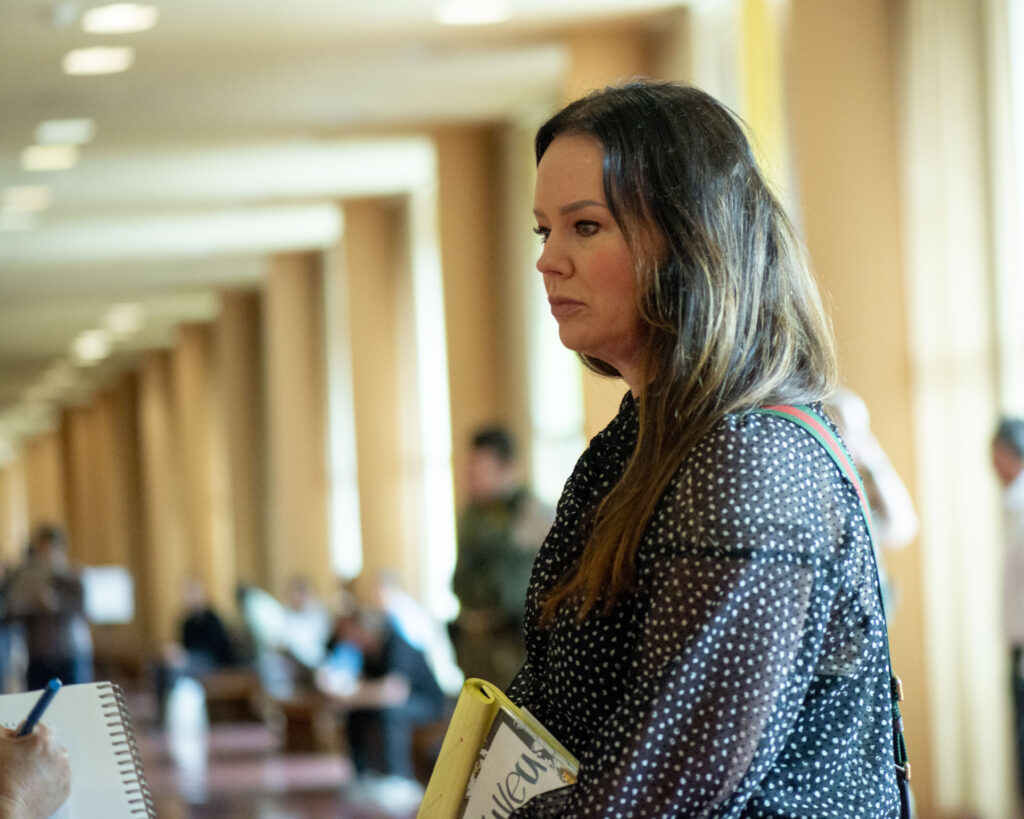

“Well, to that I would say—and this is a really troubling and big component—the DA’s office sought out their own use of force expert, and he similarly cleared these officers,” Fox said. “And yet somehow, they [the DA’s office] now have another use of force expert, which to me has all the hallmarks of shopping for answers.”
Interesting, but does it negate the other evidence that Frugoli claims to possess—evidence she believes will demonstrate that Nail and Mazariegos assaulted Julio Jimenez Lopez without cause and then filed false police reports about the incident?
“After a thorough review of the evidence, which included body-worn camera footage, eyewitness accounts, medical records, and reports from the San Rafael Police Department, my office has concluded there is sufficient evidence to prove these charges beyond a reasonable doubt,” Frugoli said in a statement issued on June 29, 2023, the date she filed the charges.
An Insistent Public
The public has already seen some of the DA’s evidence from the incident. Nail’s and Mazariegos’s body cam videos, as well as their police reports claiming that Jimenez Lopez hit Nail in the head, were leaked to the media last September.
The videos show that during questioning about an open container of beer, Jimenez Lopez stood to retrieve his identification. Nail and Mazariegos then grabbed Jimenez Lopez and took him to the ground. In the footage, Nail can be seen punching Jimenez Lopez in the face.
Even watching frame-by-frame, it doesn’t appear that Jimenez Lopez hit Nail. Yet Jimenez Lopez was arrested and the DA filed criminal charges against him. Those charges were later dropped, after the DA watched the videos.
Protests erupted when the story hit the media, and the public demanded the officers be fired and prosecuted. Both Mazariegos and Nail left the employment of the police department earlier this year, although the city has not confirmed whether they quit or were terminated.
Still, people are clamoring to obtain San Rafael’s investigative report, the one Fox and Shea claim clears Nail and Mazariegos. The independent investigator completed the report on April 28, after an eight-month investigation.
City attorney Rob Epstein then spent weeks vacillating on whether to release the report to the public. In June, Epstein decided against releasing the report, stating that the former officers had threatened to sue the city if he did.
While there are strong laws protecting the privacy of law enforcement officers, Senate Bill 1421 requires disclosure of records when an officer’s use of force results in great bodily injury to a person.
Medical reports provided to the Pacific Sun reveal that Jimenez Lopez suffered injuries including a broken nose, concussion and a torn labrum in his shoulder that required surgery.
Another Day, Another Court
Although Epstein may have fended off a lawsuit by Mazariegos and Nail, San Rafael is now the defendant in three legal actions, all seeking to force the city to release the report under the California Public Records Act (CPRA).
Tyler Larson, a San Rafael resident and law student, is one of three petitioners that filed against San Rafael. Jimenez Lopez’s attorney and the Marin Independent Journal filed similar actions.
If the judge rules in their favor, Larson told me that he intends to distribute the report to the community, via Nextdoor and other venues. He filed because he was disturbed by what he saw in the videos, even more so because he’s raising his children in San Rafael.
“I followed the story very closely from when the body cam was released last year, and then I filed CPRA requests for the investigative report,” Larson said. “I think it is important that the community see the city’s and the police department’s internal reflections on this incident. We have a right to understand.”
In mid-August, Marin County Superior Court Judge Andrew Sweet issued a tentative ruling that San Rafael must release the report. The city opposed the ruling, and Sweet is now considering the matter. The next court date is Sept. 25.
Higher Stakes
It’s easy to become mired in the legal battles, both criminal and civil, as they play out in the courtroom. Comparing notes, keeping score, getting the scoop.
But as I prepared to leave the Civic Center last week, I was reminded that there’s much more at stake. A friend introduced me to Jimenez Lopez’s wife and young daughter.
The family’s attorney, Anthony Label, agreed to let me speak with Jimenez Lopez. Label is representing him in a civil lawsuit against San Rafael and the former officers.
As I waited for Jimenez Lopez to return from the restroom, Label told me that his client had received a subpoena from the prosecution to attend Nail’s and Mazariegos’s preliminary hearing.
The minutes ticked by. Finally, someone went to look for Jimenez Lopez, and he eventually emerged, looking nervous. He admitted that he hid in the bathroom to avoid Mazariegos and Nail.
“I feel afraid,” Jimenez Lopez said. “I don’t want to see them.”
Yet, he also said that he will continue to come to court, whether he receives a subpoena or not. Jimenez Lopez simply wants justice.
“Everyone has to be responsible for their actions,” he said. “I didn’t do anything to them.”




